Contents
Market Overview
Macro Review
Debt ceiling brinkmanship in the U.S. Congress amid rising UST yields (with UST10y yields briefly breaking back above the psychological 1.50% level), USD strength, and spiking energy prices globally dominated most of the last week of the third quarter. Overall, this was not a good mix for equities that slid throughout the week, pushing VIX higher in the process (to the 23-24 range, from 18 at the start of the week. The first day of October saw some selective measured optimism returning to risk markets after the S&P500 recorded in September its worst month since March 2020 and EM suffered highest outflows from the asset class since March 2021. The U.S. Congress managed to pass a stopgap funding bill on Thursday afternoon that avoided a federal government shutdown this Friday, but U.S. debt ceiling noise is likely to continue well into 4Q. Gas prices in Europe surged to a record before retreating somewhat as headlines hit that the Chinese authorities have directed state energy companies to secure energy supplies for the winter “at any cost”, stoking fears of a short term demand squeeze that could push prices even higher. Meanwhile, the leaders of the G4 systemic global Central Banks, Andrew Bailey (BOE), Haruhiko Kuroda (BOJ), Christine Lagarde (ECB) and Jerome Powell (Fed) participated together in an ECB virtual panel event, but without providing any new information to markets beyond the well telegraphed “taper is separate from liftoff” line from the Fed. Earlier in the week, Fed Chair Powell and Treasury Secretary Janet Yellen testified in front of the Senate Banking Committee, warning that a U.S. default due to a failure to raise the debt ceiling would have very material consequences for the economy and markets. Comments by senators during the hearing raised question marks around the odds of Powell’s reappointment, although it remains the base case for now. Overall, the Chair’s comments sounded marginally more dovish this week in comparison to last week’s FOMC and press conference, as Powell stated that the U.S. is a “long way” from meeting the maximum employment test, but that the Fed has “all but met” tests to taper, highlighting once more the taper vs liftoff distinction. In terms of notable data releases, the PCE index, the Fed’s favorite inflation measure, went up to 4.3% in August, from 4.2% in July, while robust Personal Spending (0.8% y/y in August, from 0.3% in July) signaled resiliency on the U.S. economy’s demand side. Chinese non-manufacturing PMIs rebounded strongly in September (53.2 vs 49.8 consensus estimate and 47.5 in August) after last month’s significant miss, indicating that the weakness in the service sector was likely limited to the period of temporary restrictive measures introduced in August to combat the spread of the Delta variant. In China, PBOC released a statement this week assuring the public that the intention of the authorities is to ensure a “healthy” real estate market. In this context, although uncertainty around the Evergrande situation remains high, signals are getting stronger that the government is unlikely to allow it to become a systemic crisis. Last but not least, the USD was in focus this week, having reached its highest level against other major currencies since November 2020. EMFX, not surprisingly, was the mirror image of dollar strength, dropping to the lowest level over the same time period. The USD has staged similar rallies at the end of the previous two quarters this year, so there might be a decent technical aspect to the current dollar strength. However, we also note the challenging macro backdrop for a number of EM currencies due to sticky elevated domestic inflation dynamics eroding real rate buffers and increasing vulnerability to episodes of USD strength.
EM Credit Update
EM hard currency sovereign credit ended the week down 0.9% as the EMBIG Diversified spread widened by 5bps; EM corporates outperformed, returning -0.4% amid a generally volatile end of month/quarter week for global markets. In terms of individual sovereign credits, Zambia, Lithuania and Slovakia outperformed, reflecting idiosyncratic developments in the case of Zambia and the general risk-off tone in the case of EM “safe havens” Lithuania and Slovakia. High-yielders Sri Lanka, Belarus and Tajikistan lagged.
The Week Ahead
In CEEMEA, investor attention will be focused on Turkey’s inflation report for September. This will provide important clues to markets amid the monetary easing cycle initiated by the central bank last month. Elsewhere, policy rate decisions are due in Poland (0.1%), Romania (1.25%) and Israel (0.1%), with market consensus expecting policymakers to keep interest rates unchanged in all three cases. It will be an inflation heavy week for LatAm economies, with Mexico, Brazil, Colombia and Chile all reporting September numbers, amid higher energy prices putting upward pressure on inflation expectations/forecasts across the region.
Highlights from emerging markets discussed below include: Political noise in Peru continues as Castillo struggles to balance radical and moderate factions; and The European Union (EU) set to observe Venezuela’s regional and municipal elections in November.
Fixed Income
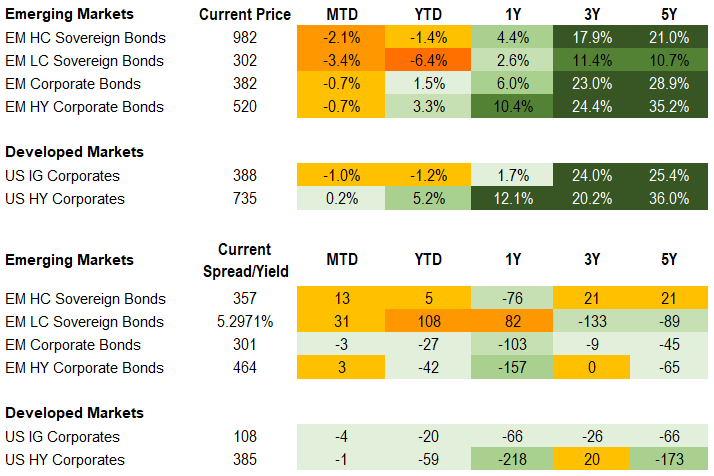
Equities
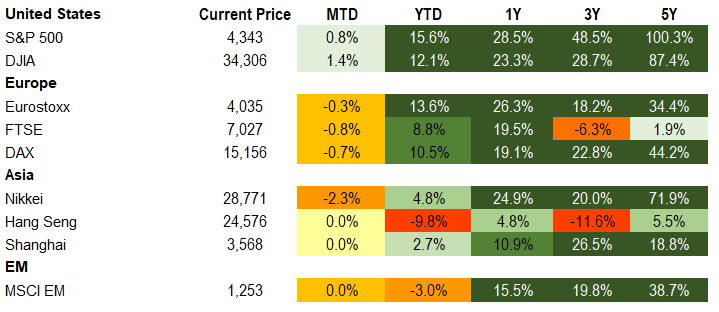
Commodities

Source for data tables: Bloomberg, JPMorgan, Gramercy. EM Fixed Income is represented by the following JPMorgan Indicies: EMBI Global, GBI-EM Global Diversified, CEMBI Broad Diversified and CEMBI Broad High Yield. DM Fixed Income is represented by the JPMorgan JULI Total Return Index and Domestic High Yield Index. Fixed Income, Equity and Commodity data is as of October 1, 2021 (mid-afternoon).
Emerging Markets Weekly Highlights
Political noise in Peru continues as Castillo struggles to balance radical and moderate factions
Event: The discussion over renegotiation of gas contracts with Camisea has prompted divergent stances from the more extreme members of the administration, Prime Minister, Guido Bellido, ruling party-head, Vladmir Cerron, and the comparatively more moderate individuals, notably Finance Minister, Pedro Francke. Bellido and Cerron have continued to threaten nationalization and expropriation while Francke and Castillo call for negotiation within existing laws. At the same time, controversy over the Minister of Labor being linked to terrorism has emerged, prompting threats of a confidence vote from Bellido. Congress rejected the request and plans to negotiate with the government. Lastly, rumors of the Central Bank Governor’s resignation from earlier this month, which ultimately were quelled or untrue, also speaks to the divisions.
Gramercy Commentary: We continue to expect governability risks to plague Peru over the forecast period. Recent events and headlines provide insight into tensions and vulnerabilities associated with the inexperienced and ideological elements of the new administration. On one hand, the more moderate aspects of ruling Peru Libre and divided Congress combined with technical challenges should limit the scope of fiscal and macroeconomic policy deterioration in the near-term. However, persistent and political uncertainty should pose material headwinds to growth and investment next year. On the other hand, one cannot rule out negative surprises such as ouster of Central Bank Governor, Julio Velarde or Pedro Franke, which would further shock sentiment and capital flows. In this backdrop, Peruvian asset performance will likely remain lackluster to poor and ratings will face downward pressure.
The European Union (EU) set to observe Venezuela’s regional and municipal elections in November
Event: The EU has agreed to deploy a delegation to observe Venezuela’s local and regional elections scheduled for November 21st, responding to an invitation by the Venezuelan National Electoral Council. Meanwhile, talks in Mexico between the Maduro regime and representatives of the opposition concluded without tangible progress.
Gramercy Commentary: It is not clear at this stage when orif negotiations between the two sides might resume. Chances for any material progress were always low, owing to incentives for the Maduro government to delay negotiations and a general lack of unity and cohesive position on many important issues by the opposition. In addition, both camps continue to suffer from abysmal approval ratings by a politically disillusioned population, undermining their ability to find a breakthrough. This being said, a more promising signal for Venezuela’s medium-term future came from the EU’s agreement to send a mission of observers to the upcoming regional and municipal elections in November. Organizing transparent elections in the presence of credible external observers at the local level could become an important precursor for a similar process at the national level. As a reminder, holding internationally recognized national elections would be a critical step toward unlocking Venezuela’s current political paralysis. Meaningful progress toward “free and fair” elections is likely be the key pre-condition for sanctions relief amid an evolving “sticks and carrots” strategy by the U.S./Europe and their Latin American allies. A more flexible approach on exerting pressure on the Maduro regime as well as some geopolitical quid pro quo could gradually pave the way toward a potential “negotiated transition”, improving the odds of regime change over the medium-term, in our view.
Emerging Markets Technicals
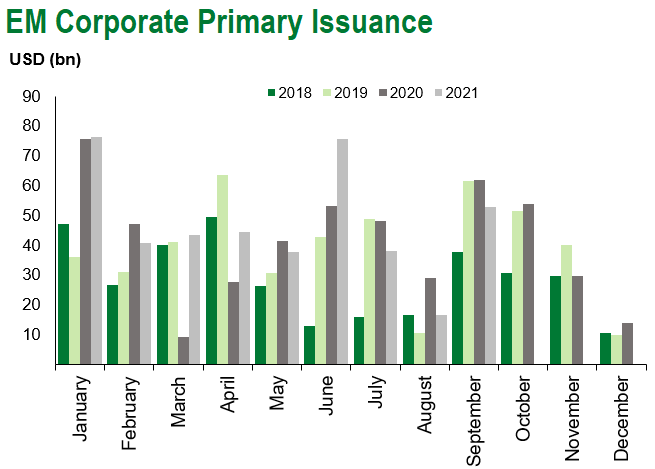
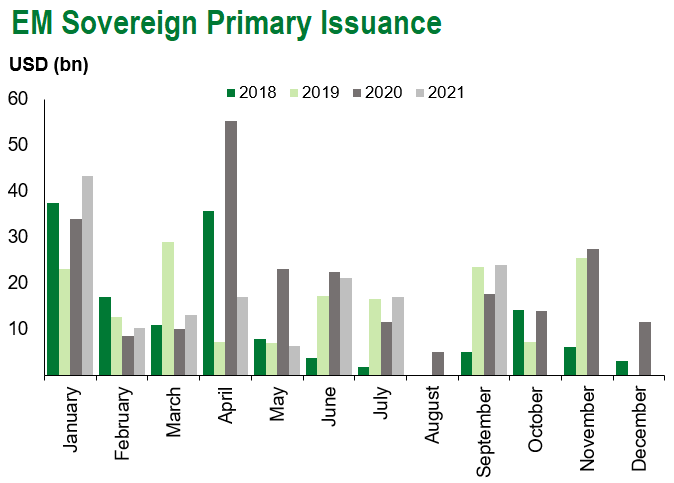
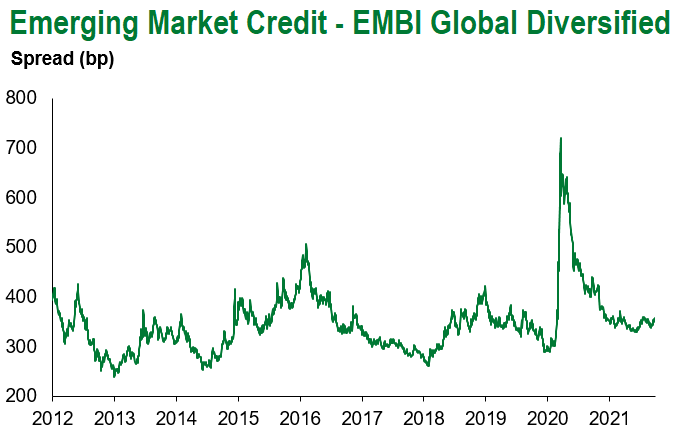
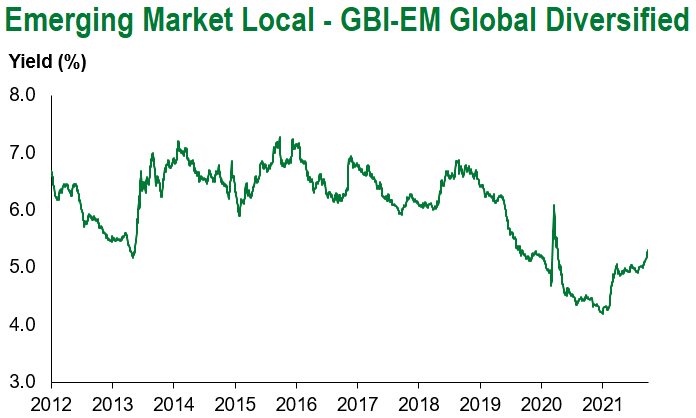
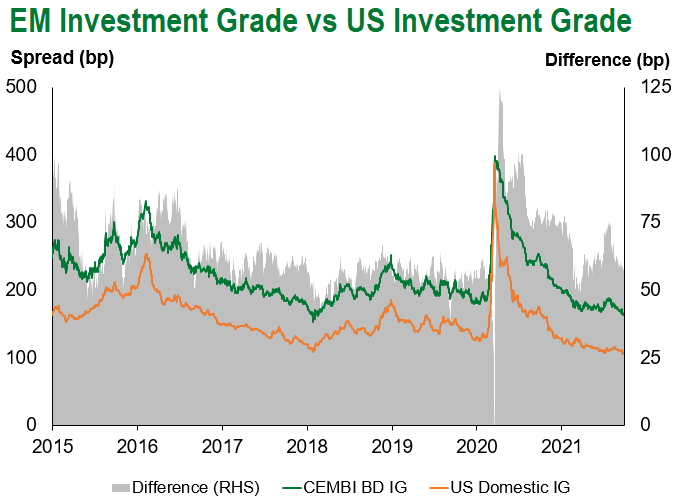
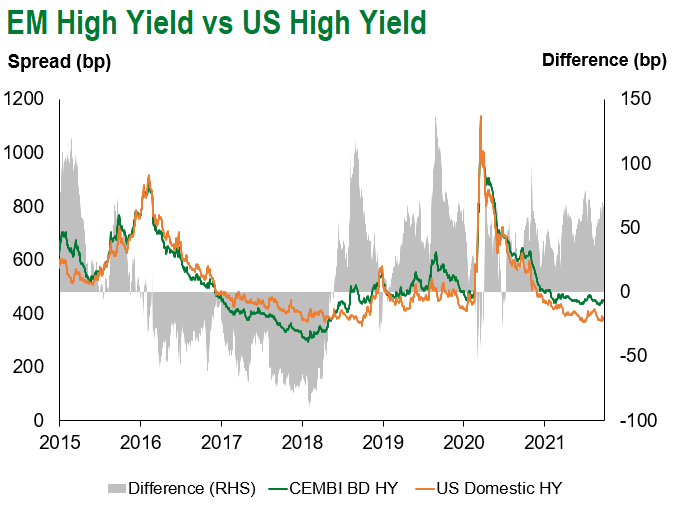
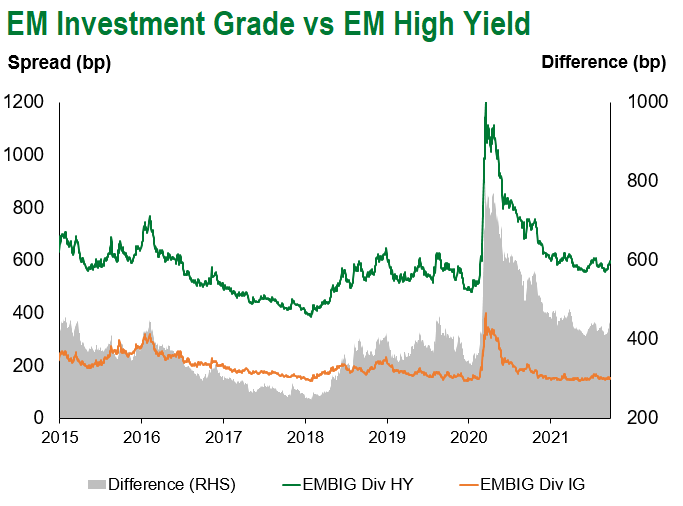
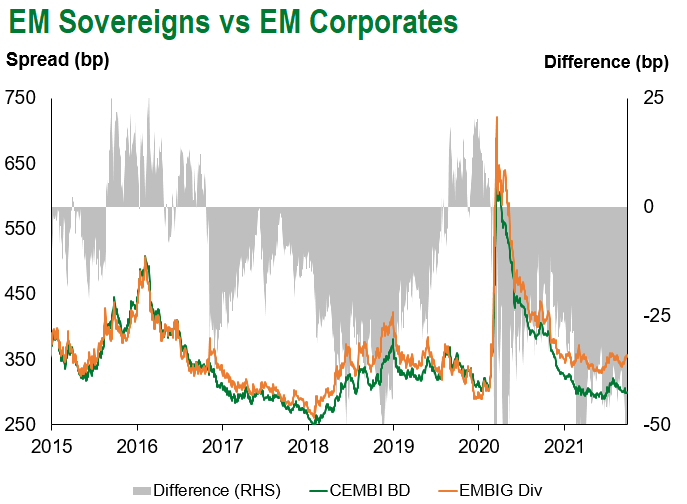
Emerging Markets Flows
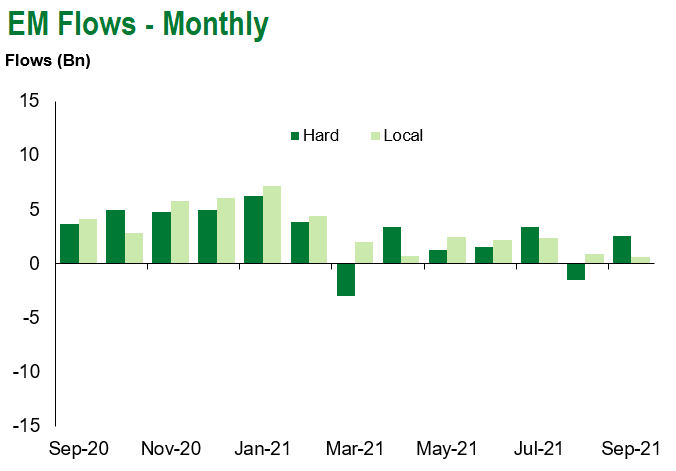
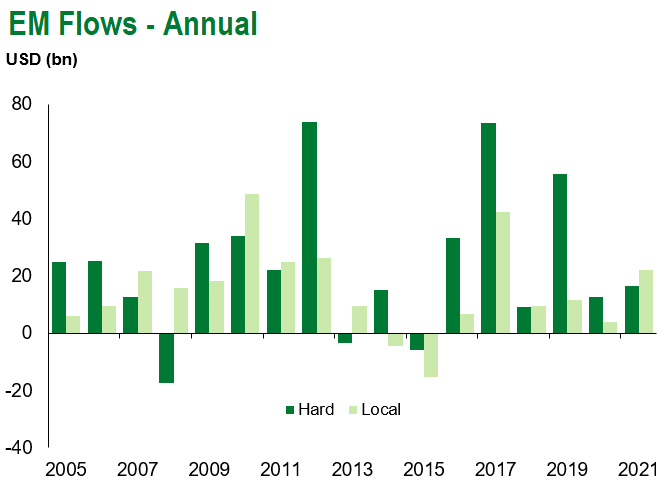
Source for graphs: Bloomberg, JPMorgan, Gramercy. As of October 1, 2021.
COVID Resources
Emerging Markets COVID-19 Case Summary
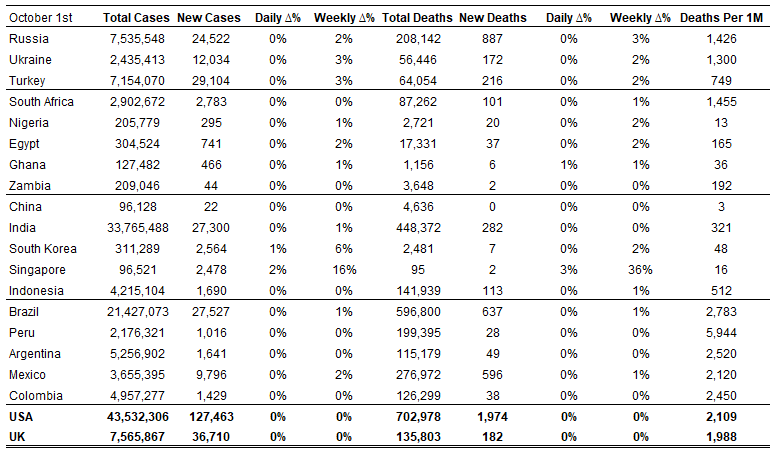
Source: Worldometer as of October 1, 2021.
Additional Crisis Resources:
Johns Hopkins COVID-19 Case Tracker
For questions, please contact:
Kathryn Exum, Senior Vice President, Sovereign Research Analyst, [email protected]
Petar Atanasov, Senior Vice President, Sovereign Research Analyst, [email protected]
Tolu Alamutu, CFA, Senior Vice President, Corporate Research Analyst, [email protected]
James Barry, Vice President, Corporate Research Analyst, [email protected]
This document is for informational purposes only. The information presented is not intended to be relied upon as a forecast, research or investment advice, and is not a recommendation, offer or solicitation to buy or sell any securities or to adopt any investment strategy. Gramercy may have current investment positions in the securities or sovereigns mentioned above. The information and opinions contained in this paper are as of the date of initial publication, derived from proprietary and nonproprietary sources deemed by Gramercy to be reliable, are not necessarily all-inclusive and are not guaranteed as to accuracy. This paper may contain “forward-looking” information that is not purely historical in nature. Such information may include, among other things, projections and forecasts. There is no guarantee that any forecasts made will come to pass. Reliance upon information in this paper is at the sole discretion of the reader. You should not rely on this presentation as the basis upon which to make an investment decision. Investment involves risk. There can be no assurance that investment objectives will be achieved. Investors must be prepared to bear the risk of a total loss of their investment. These risks are often heightened for investments in emerging/developing markets or smaller capital markets. International investing involves risks, including risks related to foreign currency, limited liquidity, less government regulation, and the possibility of substantial volatility due to adverse political, economic or other developments. The information provided herein is neither tax nor legal advice. Investors should speak to their tax professional for specific information regarding their tax situation.